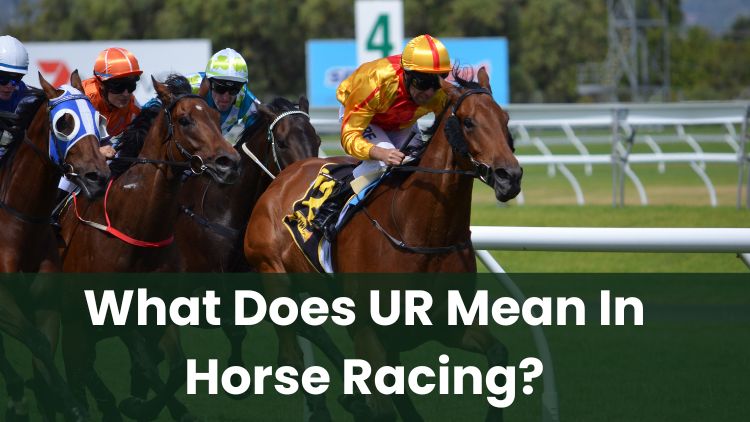
Horse racing is notorious for its many confusing terms and phrases, which can be especially difficult for those that are new to the sport. Whether you’re actively watching a race, or reading about past events, you might come across various unfamiliar abbreviations.
One such term is “UR”- it may seem a little puzzling at first, but learning the meaning behind these terms can be helpful for developing a greater understanding of horse racing as a whole. A solid understanding of these abbreviations can help bettors make more informed choices when it comes to racing activities.
In this blog post, we’ll cover what UR means, as well as how it can affect the outcome of any potential betting activities that you undertake.
What Is UR in Horse Racing?
When you see "UR" next to a horse's name in the results, it stands for "Unseated Rider". This indicates that during the race, the jockey was unseated from the horse.
Unseating can happen for various reasons, often when a horse makes a sudden move or if there's a minor collision on the track. Fortunately, most of the time, both the horse and the jockey recover quickly without any harm.
Understanding what "UR" means can help give you insight into what occurred during the race, as it helps to paint a clearer picture of the race's flow and any unexpected events that may have influenced the outcome.
What Happens If There Is an Unseated Rider in a Race?
During a horse race, if a rider unseats, a few things may follow. The horse will usually continue running without the jockey, often following the familiar route with the other horses. This event is marked as "UR" in the results.
If a jockey is unseated, it doesn't necessarily mean an end to the race. The rest of the jockeys and horses usually proceed as normal. Meanwhile, racecourse officials and on-site medics act swiftly to ensure the safety of both the horse and the unseated rider.
In terms of betting, an unseated rider affects how the race is completed for that specific horse. Bets on a horse that unseated its rider are often lost, as the horse fails to officially finish with a rider.
Keeping these factors in mind can give you a greater understanding of race results and horse racing jargon. Additionally, it highlights the importance of enjoying the sport with mindful attention to the details that make each race unique.
How Often Do UR's Happen in Horse Racing?
Unseated Riders, or "URs", can occur in horse racing, but are not overly common. The frequency of such incidents can vary based on several factors, including the type of race and the conditions on the day.
Jump racing tends to see more URs than flat racing; this is mainly because of the added complexity of navigating fences and hurdles, which can sometimes result in a jockey becoming unseated.
Weather conditions and the racecourse surface can also play a role. Wet or slippery ground might increase the chances of a horse losing its footing, although race organisers take steps to try and maintain safe environments.
Jockeys are highly skilled and trained athletes who work closely with their horses to ensure the best possible performance, and try to minimise the risks of an unseated rider incident.
What Happens To Your Bet If a Jockey Falls?
If a jockey falls during a race, it can affect the outcome for that particular horse. Typically, a horse without a jockey won't finish officially, impacting any bets placed on it.
In most cases, if a jockey is unseated, the bets will be considered as losses since the horse doesn't complete the race as per normal terms. This is part of the risk involved in horse racing, where various unforeseen events can occur.
It can be useful to familiarise yourself with the betting rules of the specific bookmaker you're using. These rules outline how they handle situations like a jockey falling. Each bookmaker may have slightly different policies, so being informed can help manage expectations.
Approaching betting with this understanding helps to encourage more mindful participation. Knowing what might happen if things don't go as anticipated allows for a clearer view of how horse racing betting works, potentially contributing to more responsible gambling practises.
Can Your Bet Still Win With a UR?
When a horse in a race is marked "UR" due to an unseated rider, it generally means the horse hasn't officially finished the race. For most types of bets, this means the bet is likely not successful.
This is because horse racing bets typically require the horse to complete the race with the jockey on board to be considered valid for a win, place, or any other betting outcome.
However, betting rules can vary by bookmaker, so it may be a good idea to check the specific terms and conditions. Some bookmakers might offer promotions or specific bet types that handle these situations differently.
Always remember that betting should be approached with caution and awareness of the sport’s many variables.
**The information provided in this blog is intended for educational purposes and should not be construed as betting advice or a guarantee of success. Always gamble responsibly.
